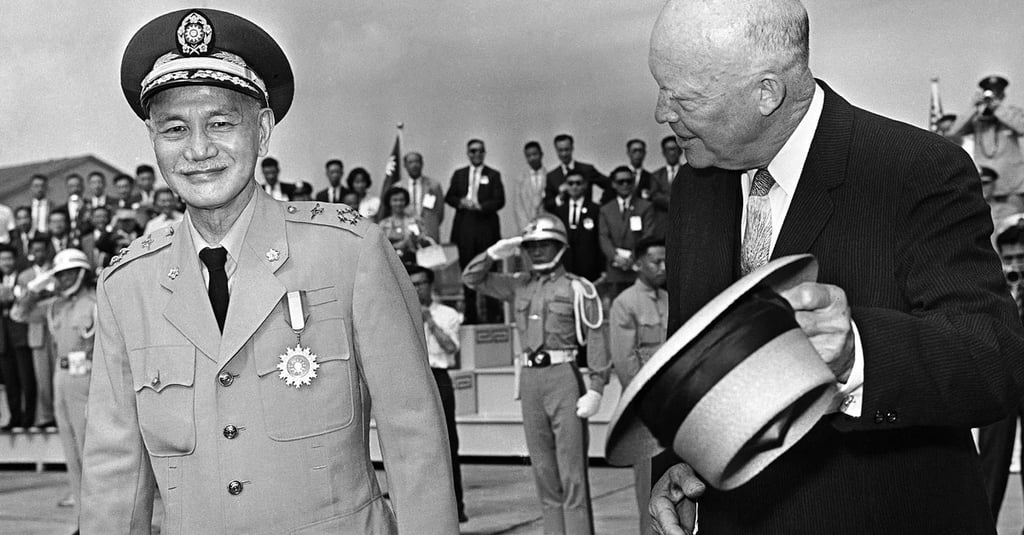Remembering the 1958 Taiwan Strait Crisis: A Forgotten Lesson in Nuclear Deterrence
As China ramps up military pressure on Taiwan, revisiting the 1958 Taiwan Strait Crisis offers crucial insight into Cold War brinkmanship, U.S. resolve, and the fragile nature of deterrence in East Asia.
WORLDPOLITICS
Defense One
5/2/20252 min read


As tensions between China and Taiwan rise once again, it’s instructive to revisit a lesser-known but pivotal moment in Cold War history: the 1958 Taiwan Strait Crisis. During that fall, the United States, the Soviet Union, the People’s Republic of China (PRC), and the Republic of China (ROC) were dangerously close to nuclear conflict—over the fate of a few tiny islands in the Taiwan Strait.
This high-stakes standoff, now referred to as the Second Taiwan Strait Crisis, not only shook the foundations of U.S.-China relations but also led to a dramatic rift between China and the Soviet Union, reshaping the trajectory of the Cold War. Today, as Beijing exerts military and political pressure on Taiwan, this historical flashpoint offers sobering lessons on deterrence and alliance management.
The crisis ignited on August 23, 1958, when Chinese forces began shelling the small ROC-controlled offshore islands of Quemoy (Jinmen) and Matsu. These islands, located just a few miles from mainland China, were symbolic outposts of Taiwan’s sovereignty and resistance against communist expansion. For the PRC, they represented unfinished business in the Chinese Civil War.
At the time, U.S. President Dwight D. Eisenhower was vacationing in Newport, Rhode Island, where the Navy had prepared a special office for him at the Naval War College. As the bombardment escalated, Eisenhower summoned Secretary of State John Foster Dulles to Newport to strategize America's response.
On September 4, 1958, Dulles met with the President for nearly two hours, alongside top advisors including Brig. Gen. Andrew J. Goodpaster, Joseph Greene, Press Secretary James Hagerty, and Captain E.P. Aurand, Eisenhower’s naval aide. That same day, Dulles released what became known as the Newport Statement, laying out eight critical points that clarified America's commitment to Taiwan.
At the core of the U.S. position was a reaffirmation of its mutual defense treaty with the Republic of China, which obligated Washington to defend Taiwan and the Pescadores Islands from any armed attack. Moreover, the Formosa Resolution of 1955 had already given Eisenhower broad authority to protect "related positions," such as Quemoy and Matsu, which—though not explicitly covered by the treaty—were seen as critical to Taiwan’s defense.
Although the crisis eventually deescalated without a direct U.S.-China military clash, it revealed deep tensions within the communist bloc. The Soviet Union’s reluctance to fully back China’s aggressive posture created a long-term fissure between Moscow and Beijing. Meanwhile, the United States’ clear signaling and naval presence in the Taiwan Strait demonstrated how credible deterrence, even short of war, could preserve peace.
Today, with Beijing's growing assertiveness and Washington’s strategic ambiguity under strain, the lessons from 1958 are more relevant than ever. Clear commitments, strong alliances, and the credible threat of force—however uncomfortable—were the pillars of deterrence then. Ignoring them now could invite catastrophic miscalculation.
Photo: AP 1960
© 2025. Ke Press Global. A Ke Harbor Company. All rights reserved.
FOLLOW KE PRESS GLOBAL ON :
Contact us


